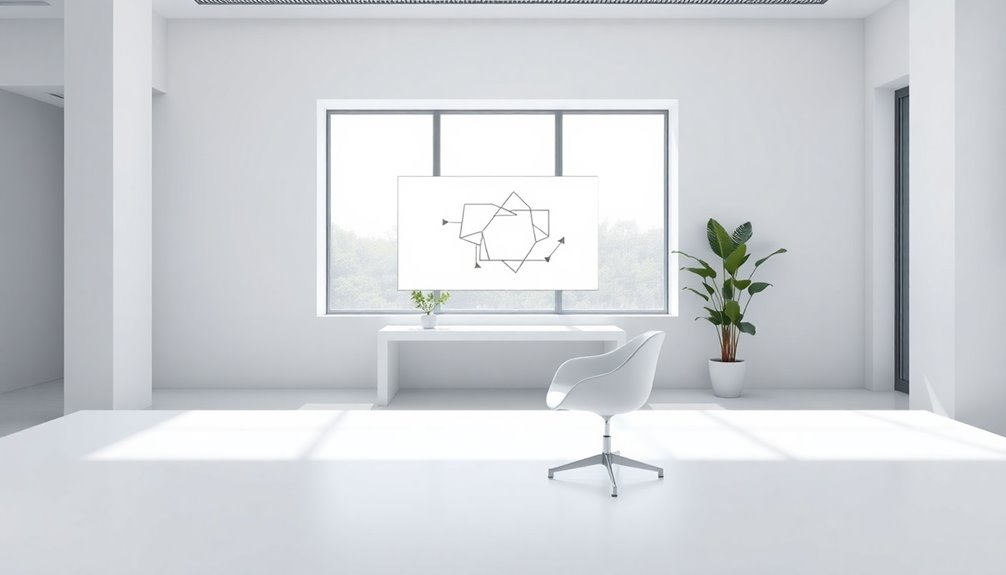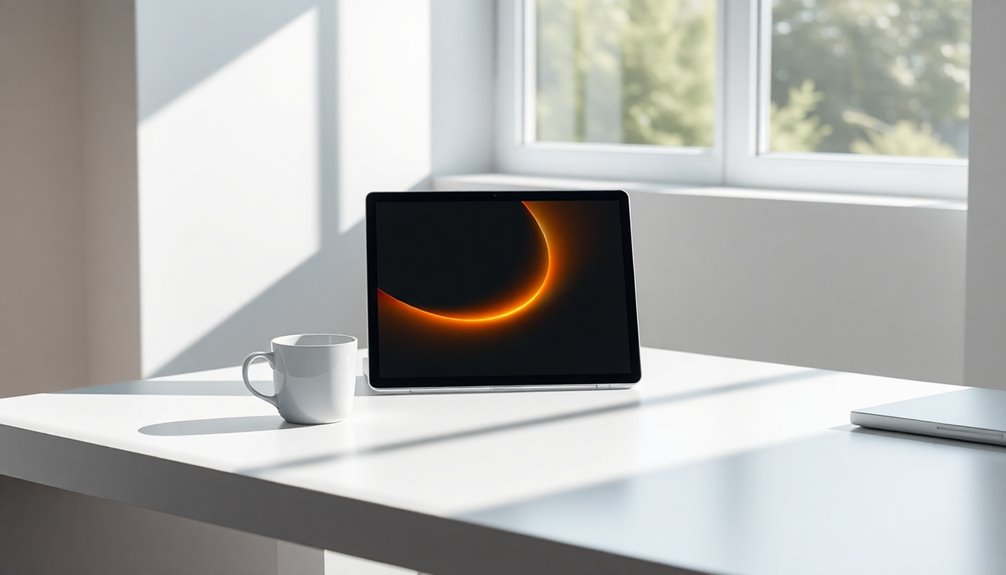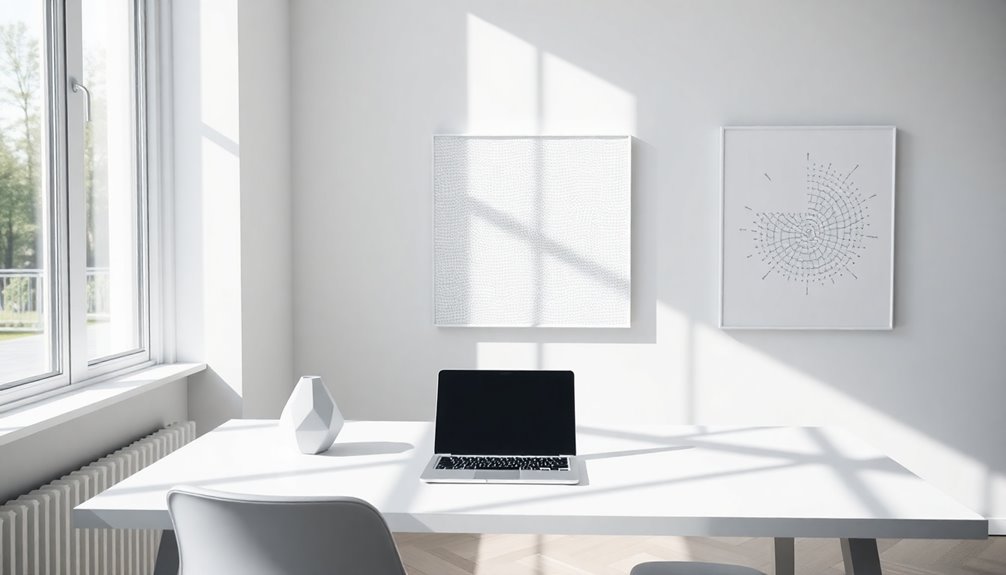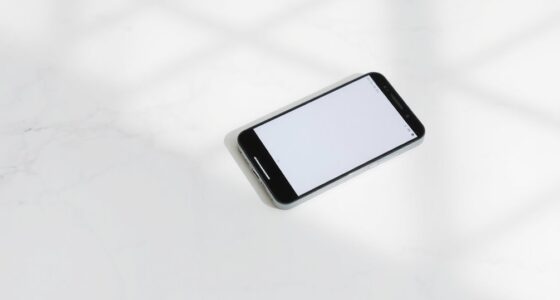AI's impact on minimalist design practices is profound. It automates tedious tasks, freeing you to focus on creativity. Through user-friendly tools, AI suggests layouts and colors that align with minimalist aesthetics. Generative design algorithms propose sleek structures, enhancing functionality. Furthermore, AI analyzes user behavior to refine experiences, ensuring clear communication. This blending of technology and simplicity sets the stage for exciting developments in design. There's much more about trends and innovations waiting to be discovered.
Key Takeaways
- AI tools streamline repetitive tasks, allowing designers to focus on creativity and conceptual clarity in minimalist designs.
- Generative design algorithms propose layouts that enhance functionality while adhering to minimalist principles.
- AI analyzes design trends and user behavior to refine minimalist aesthetics and improve user experience.
- User-friendly AI platforms integrate smoothly into existing workflows, promoting efficiency in minimalist design projects.
- The future of minimalist design will see deeper AI integration, emphasizing personalization, sustainability, and thoughtful visual communication.
The Integration of AI in Minimalist Design

As you explore the world of minimalist design, you'll quickly notice how AI tools are transforming the creative process.
These innovative platforms, like Adobe Sensei and Canva, automate repetitive tasks, freeing you to focus on essential elements of your design. AI suggests minimalist layouts and color schemes that embody the "less is more" philosophy, enhancing your work's aesthetic appeal.
AI tools like Adobe Sensei and Canva streamline design processes, allowing you to emphasize essential minimalist elements effortlessly.
Generative design algorithms take it a step further by proposing structures that prioritize functionality while maintaining a clean look. Additionally, AI analyzes vast design data to identify trends, ensuring you remain relevant and innovative. With user-friendly AI tools, embracing minimalist design becomes simpler, allowing you to create impactful, uncluttered visuals effortlessly.
Streamlining Design Processes With AI

While traditional design processes often involve multiple tools and lengthy workflows, AI streamlines these tasks, making your work more efficient.
By automating repetitive tasks with AI tools, you can focus on creativity and innovation, leaving mundane aspects behind.
In addition, leveraging technology consolidates overlapping design tools, reducing clutter and enhancing resource efficiency.
User-friendly AI platforms integrate seamlessly into your existing workflows, minimizing the learning curve and encouraging organic adoption.
With AI, you can roll out design projects more efficiently by concentrating on impactful use cases and gathering feedback through iterative processes.
Moreover, AI algorithms analyze vast amounts of design data to suggest style-consistent elements, greatly speeding up the process while maintaining the aesthetic quality essential for minimalist designs. This approach aligns well with creating an interior design mood board, as it helps in selecting cohesive elements that reflect the desired atmosphere.
Enhancing User Experience Through Minimalism and AI

Minimalist design greatly enhances user experience by cutting down on cognitive load, enabling you to process information more efficiently and take action with ease.
By integrating AI in design, you can achieve user-friendly interfaces that prioritize simplicity and accessibility. Here are some ways this combination works:
- AI identifies ideal whitespace, guiding your navigation effortlessly.
- Algorithms analyze user behavior to suggest minimalist elements that resonate.
- Focused content eliminates distractions, fostering clearer communication.
With these insights, you'll find that minimalist designs not only improve engagement but also lead to higher user satisfaction. Additionally, leveraging machine learning algorithms can further refine user interactions, creating a more personalized experience.
Embracing AI alongside minimalist principles creates a seamless experience, ensuring you connect better with your audience while making the interface intuitive and enjoyable.
The Role of Generative Design Algorithms

Integrating AI into design not only enhances user experience but also opens up new possibilities through generative design algorithms. These algorithms leverage AI as a tool to create various design options based on defined parameters, allowing you to explore minimalist aesthetics that prioritize simplicity and functionality.
By analyzing vast datasets, generative design identifies patterns that inspire innovative minimalist designs while staying true to established design practices. Automating the iterative process means you can focus on refining and selecting the best options, boosting your creativity and productivity.
Additionally, generative design has the potential to discover unexpected combinations, pushing minimalism's boundaries and leading to unique solutions. This approach can also optimize materials, contributing to more sustainable design outcomes. Moreover, AI technologies can significantly enhance the efficiency of the design process by automating routine tasks, allowing designers to dedicate more time to creativity.
Balancing Human Creativity With AI Suggestions

When you're using AI in your minimalist design process, it's essential to find a balance between its suggestions and your own creative instincts. While AI can enhance your designs, it often misses the emotional depth and cultural context only you can provide. Incorporating self-care practices into your design routine can help maintain your individual creativity and emotional connection to your work.
Enhancing Creative Collaboration
AI tools can greatly enhance creative collaboration in design, offering valuable suggestions that elevate your work while preserving your unique touch.
By integrating artificial intelligence into your creative process, you can explore new dimensions of minimalist design. Here are some ways AI can support your collaboration:
- Innovative Proposals: Generative design algorithms suggest structural elements that align with minimalist aesthetics.
- Automation of Tasks: AI automates repetitive tasks, freeing you to focus on conceptual clarity and simplicity.
- Data-Driven Insights: AI analyzes current trends, helping you make informed aesthetic choices.
- Additionally, AI fosters cross-functional collaboration among teams, allowing for more diverse input and creative solutions.
Preserving Emotional Connection
While embracing AI's capabilities can streamline design processes, striking a balance between its suggestions and your creative intuition is vital for preserving emotional connections in minimalist design.
AI intelligence can automate tasks and provide unexpected aesthetic options, but it often lacks the emotional depth that comes from human creativity. Your personal experiences and cultural insights play an important role in establishing a genuine emotional connection with your audience.
Although AI suggestions can inspire innovation, they shouldn't replace your intuition, which captures the unique narratives that resonate with users. Relying too heavily on AI may lead to formulaic designs. Additionally, understanding how AI can enhance customer interactions through personalized responses can inform your design choices to better engage your audience.
Future Trends in Minimalist Design Influenced by AI

As technology evolves, minimalist design is set to embrace bold typography as a key trend, allowing you to convey impactful messages with large, eye-catching fonts.
Minimalist design is evolving, embracing bold typography to deliver powerful messages through striking, large fonts.
AI on design will reshape the future of design, enhancing graphic design with innovative elements. Here are some exciting trends to look out for:
- Monochrome palettes paired with subtle gradients create depth while maintaining minimalist principles.
- Strategic whitespace usage, driven by AI analysis of user engagement, enhances user experience and balance.
- Sustainable practices will gain traction, as AI helps identify eco-friendly materials and energy-efficient solutions. Furthermore, the integration of advanced technology in design tools will streamline the creative process and enhance overall efficiency.
These advancements in minimalism will promote user engagement by focusing on core content while reducing distractions, driving the evolution of design into a more thoughtful and impactful domain.
Frequently Asked Questions
How Does AI Impact Design?
AI impacts design by streamlining your workflow and automating repetitive tasks, so you can focus on creativity.
With algorithms analyzing aesthetics, you gain insights into patterns that enhance your work. AI can also generate unique structures, inspiring innovative ideas that push traditional boundaries.
However, while AI offers these advantages, your intuition and emotional understanding are vital to guarantee that your designs resonate culturally and personally with your audience.
What Is the Impact of Minimalist Design?
You might think minimalist design lacks personality, but it actually enhances user experience by focusing on essential content.
By eliminating distractions, you can navigate interfaces more efficiently. Whitespace and bold typography create visual balance, making information easier to digest.
Plus, minimalist layouts improve accessibility for a wider audience.
How Can AI Contribute to the Design Process?
AI can markedly contribute to the design process by automating repetitive tasks, freeing you to focus on creativity.
Tools like Adobe Sensei and Canva offer design suggestions, making it easier to create visually appealing projects. Machine learning analyzes trends, helping you stay consistent and relevant.
Additionally, generative design algorithms can inspire unique concepts, pushing your creative boundaries. With intuitive interfaces, AI makes design more accessible, encouraging you to experiment and innovate confidently.
What Is the Future of Minimalism?
Imagine a canvas where less truly becomes more. The future of minimalism in design is all about bold typography and monochrome palettes, creating striking visuals without clutter.
You'll see whitespace celebrated as a key element that enhances user experience. Sustainable practices will weave into minimalist aesthetics, prioritizing eco-friendly materials.
Clear, readable designs will boost user engagement, ensuring accessibility while keeping distractions at bay. Minimalism will evolve, but its essence will remain steadfast.
Conclusion
As you explore the evolving landscape of minimalist design, think of AI as a skilled artist's brush, effortlessly adding strokes of innovation to your canvas. Just like how a single brushstroke can transform a blank space into a masterpiece, AI enhances your creative process, streamlining tasks while inspiring fresh ideas. Embracing this synergy allows you to create designs that resonate deeper, proving that when technology meets creativity, the possibilities are endless.









